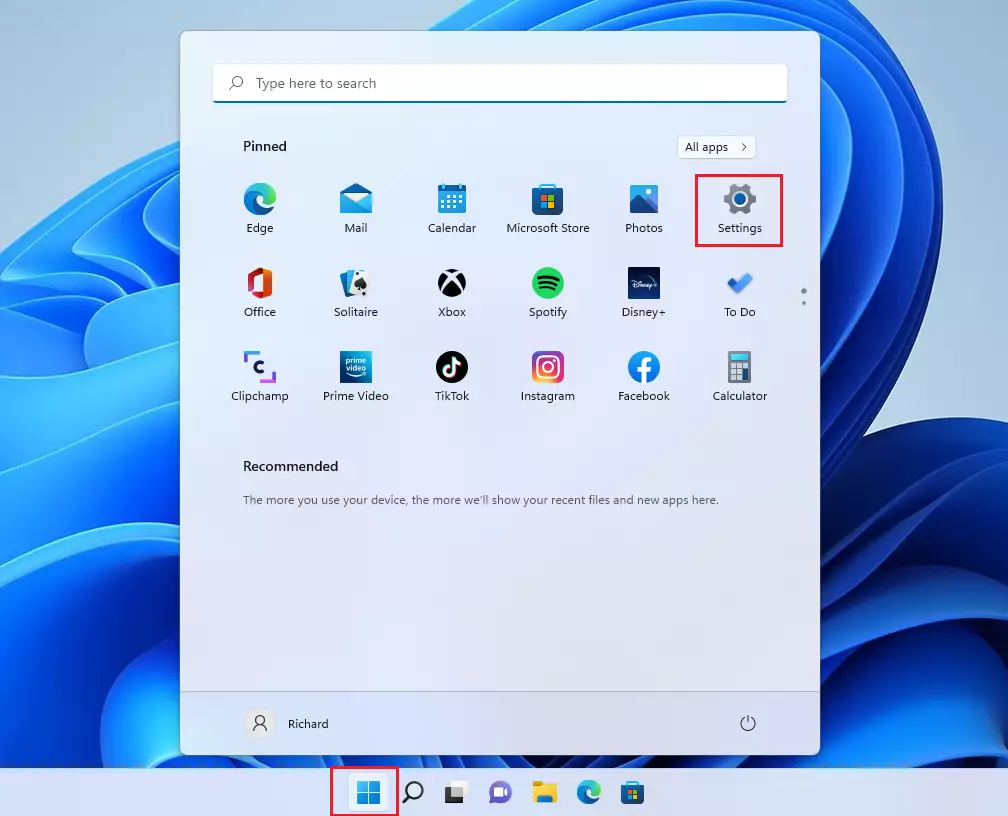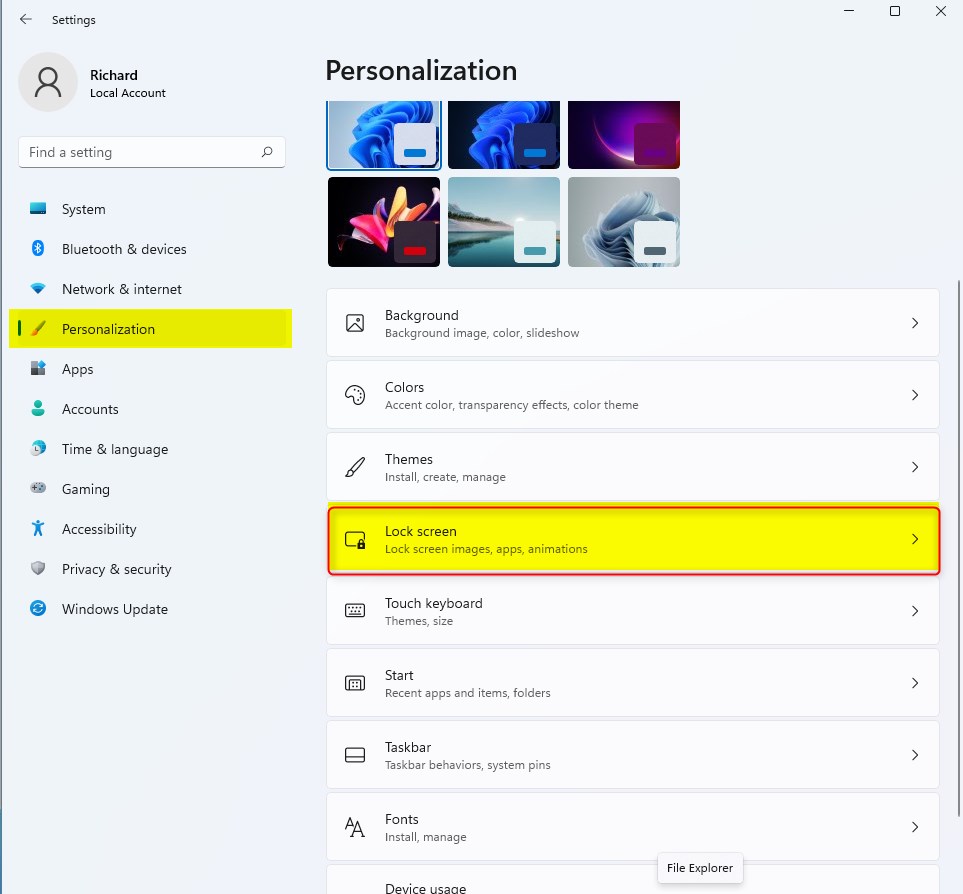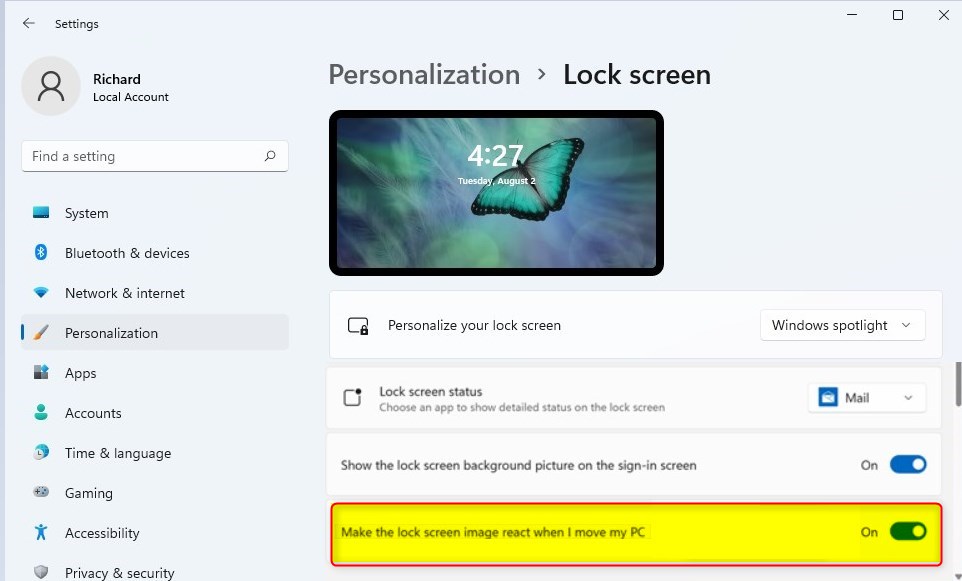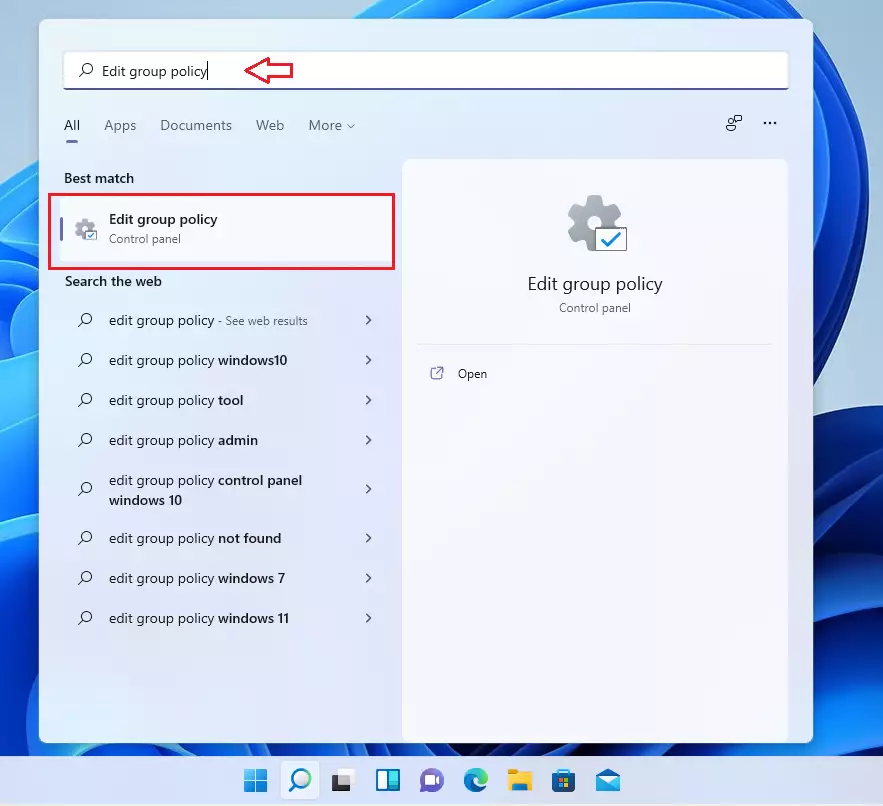This post describes enabling or disabling lock screen background motion in Windows 11.
The lock screen is the startup screen you see when you turn on your computer before signing in. The lock screen is also displayed when you lock (Windows key + L) your session or step away from your computer and are prompted to sign in again.
On tablets and other mobile devices running Windows with an accelerometer, the lock screen background will pan around a still image as you physically move your device or change its orientation.
You can prevent lock screen background motion using a static lock screen background image. Below is how to do that in Windows 11.
How to enable or disable lock screen background motion in Windows 11
As mentioned above, on tablets and other mobile devices running Windows with an accelerometer, the lock screen background will pan around a still image as you physically move your device or change its orientation.
Below is how to turn on or off the lock screen background motion.
Windows 11 has a centralized location for the majority of its settings. As a result, everything can be done, from system configurations to creating new users and updating Windows from its System Settings pane.
To get to System Settings, you can use the Windows key + I shortcut or click on Start ==> Settings, as shown in the image below:

Alternatively, you can use the search box on the taskbar to search for Settings. Then select to open it.
In the Windows Settings app, click Personalization on the left, then select the Lock screen tile on the right pane, as highlighted in the image below.

On the System > Personalization > Lock screen settings pane, toggle the switch button for “Make the lock screen image react when I move my PC” to On or Off to enable or disable this feature.

If the switch is On, Windows will automatically react when the PC is physically moved. If Off, a still image will be used instead.
If you turn on “Make the lock screen image react when I move my PC” in Windows 11, as described above, you can turn it off using the steps below.
Go to Settings > Personalization > Lock screen, then toggle the button switch to the Off position to use a still image on the lock screen when the PC is physically moved in Windows 11.

That should do it! You can now close the Windows settings app.
Alternatively, open Local Group Policy Editor by clicking the Start Menu and searching for Edit group policy, as highlighted below.
Under Best match, select Edit group policy to launch Local Group Policy Editor.

In the left pane of Local Group Policy Editor, expand the tree:
Computer Configuration\Administrative Templates\Control Panel\Personalization
Then, locate and double-click the setting “Prevent lock screen background motion” in the Personalization details pane on the right.

In the Prevent lock screen background motion setting window, set the option to Enabled or Disabled.

Select OK.
Close Local Group Policy Editor.
Conclusion:
- You can easily enable or disable lock screen background motion in Windows 11 using either the Windows Settings app or the Local Group Policy Editor.
- Using the Settings app, navigate to System > Personalization > Lock screen, and toggle the “Make the lock screen image react when I move my PC” switch to achieve the desired effect.
- If you prefer using the Local Group Policy Editor, navigate to Computer Configuration\Administrative Templates\Control Panel\Personalization and double-click the setting “Prevent lock screen background motion” to enable or disable the feature.

Leave a Reply Cancel reply